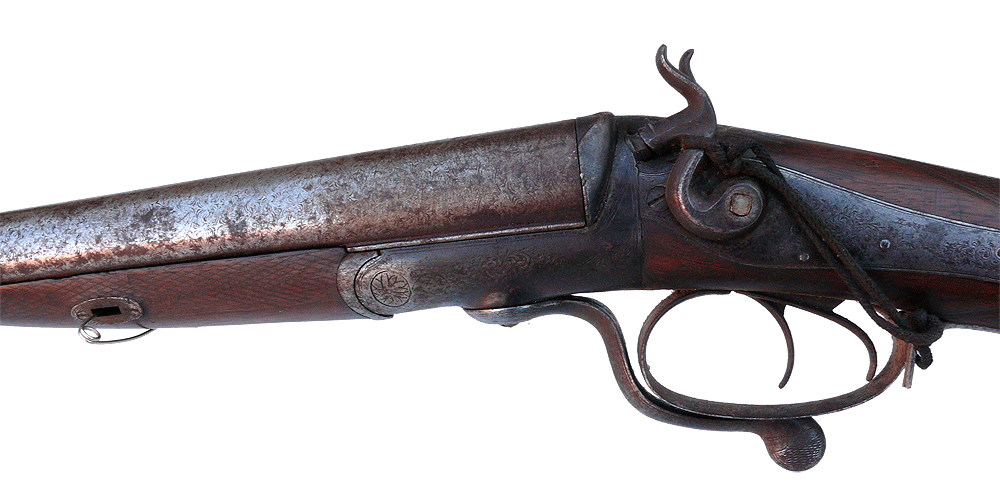Classic guns: Hawke 12-bore

Classic guns: Hawke 12-bore
When I first saw this Hawke 12-bore it brought back memories of my boyhood days in the 1950s. Why, you may ask? Well, because of its condition. In those days of relative austerity an old gun was made to last to the limit of its useful life and sometimes beyond. It seems almost shocking now, in a risk-averse, health-and-safety obsessed world, that impecunious shooters hunted around the hedgerows with such decrepit guns, but they did: I know — I was there.
This gun only bears the name Hawke on the lockplates, with no initials, name or address on the top rib. It has Henry Jones’s double screw grip underlever, which was patented in 1859, so we know it was made after that date. There is a further clue to its age in its London proof marks, one of which was not introduced until 1868. This, the slim breech ends to the barrels, double cocking locks and lack of choke suggest a date of manufacture of around 1875. As for Hawke, I suspect, as the gun carries no other details, that he was a retailer rather than a gunmaker.
A fine gun
In its day, this was quite a fine gun but, to be fair, most guns from around this period, while sometimes appearing unorthodox to modern eyes, were usually well made. The stock wood is fairly plain but tightly grained and the inletting of wood to metal is of a quality many stockers would be proud to achieve. The fairly thick “hand”, where the stock is held, and the wide, albeit now rather worn, chequering and steel heel plate are of a form and dimensions more akin to a muzzle-loader. The standing breech is slim and the trigger-guard large. All these features are often found on early breechloading guns.
This gun has been subjected to long and sometimes hard use and has received some unorthodox repairs. It is only blackpowder proofed and now the bores are just oversize relative to the original proof dimensions. They look dirty rather than heavily pitted, due to very tiny pitting. This is sometimes the result of shooting nitro cartridges in an early Damascus barrel, where the soft iron, exposed to the higher pressures and temperatures of smokeless powder, is, in effect, eroded.
Otherwise, the indications are that this gun was fairly well maintained for much of its life. The barrels are still remarkably tight on the action but that is in part due to the effective lock-up of the Jones underlever.
Unorthodox repairs
The two repairs that catch the eye are the safety pin through the fore-end and the shoelace tied to the hammers. Obviously, the pin on the original fore-end bolt broke and the flat bolt has been lost. As for the tied-on hammers, that was for a very practical reason: both screw pins holding the hammers in place have sheared off due to over-tightening. On firing, the hammers would most likely jump off their locating square, but their loss has been prevented by the shoelace tied through the rear of the trigger-guard!
Today such repairs would be regarded as a bodge; years ago they were a simple solution to a problem. It was a different world, where practicality was often more important than pride in appearance. In good condition this would be a sought-after classic, but as it is, it is still a classic — representing a time within living memory when things were simpler.








